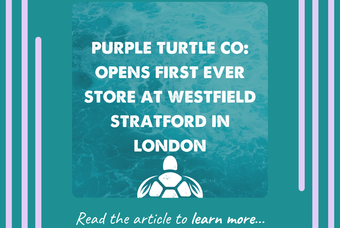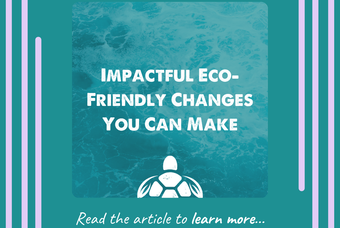The News-Hub/ Articles
Back to Articles
Recommended Articles
A Guide to Carbon Offsetting [2021]
The term carbon offset has been gaining popularity in recent years, following its introduction in the 1970s as part of the U.S Clean Air Act. This act allowed emissions to grow in already over-polluted areas in return for reduced emissions in other areas, and the carbon offset market has grown considerably since. This article provides all the information you need to know about carbon offsets.
What is a Carbon Offset?
What is the carbon offset definition? Simply put, a carbon offset is a paid service that reduces carbon emissions in one area to compensate for carbon output in another. The reason people decide to buy carbon offsets is to neutralize their carbon footprint, defined as the total output of greenhouse gases one produces each year. Greenhouse gases include carbon dioxide (CO2), methane, and much more. Flying, driving, and even buying groceries can add to your carbon footprint. If you want to find out what your carbon footprint is, check out The Nature Conservancy’s carbon footprint calculator.
Why is Carbon Offsetting Important?
The carbon emissions we produce have worldwide effects. NASA’s Earth Observatory reports that excess carbon in the atmosphere is linked to climate change and that this is having significant impacts on the planet’s biodiversity. Carbon dioxide (CO2) is a major player in regulating the Earth’s temperature; in the atmosphere, it absorbs and releases energy from the sun and Earth, and is what maintains the habitable conditions we are lucky to have. With too much atmospheric carbon, our planet would be too hot to live on, and with too little, it would become a sphere of ice.
Our oceans and forests absorb most of the atmospheric carbon, up to 55%. The ocean is what removes the most CO2, and it takes in about 25% of all the carbon we have ever produced from fossil fuels. In fact, climate and marine scientists have concluded that if it weren’t for the ocean absorbing so much carbon, our climate catastrophe would be even worse than it is now.
As well as being an essential carbon capture, the ocean is a powerful regulator of the Earth’s natural cycles, bringing winds and warm waters around the planet. But, because of the huge amount of carbon constantly being absorbed by the ocean, keystone species like coral are dying out. Carbon raises the acidity of water, causing uninhabitable conditions for many species, so we must limit our emissions to preserve this essential component of our planet.
Our woodlands and land plants also absorb quite a bit of carbon. CO2 is necessary for plant growth and more of it may actually help plants to grow larger and stronger. However, too much carbon is not good for anything. With excess carbon, plants experience warmer and longer growing seasons, which can cause undue stress. Plants need more water, are more likely to dry out, and are more susceptible to damage from insects and fires. Our biodiversity is what keeps this planet in the perfect conditions for life to survive. This is exactly why efforts to decrease atmospheric greenhouse gases (like carbon offset programs) are so important.

(Graphs by Robert Simmon, using CO2 data from the NOAA Earth System Research Laboratory and temperature data from the Goddard Institute for Space Studies.)”
With the seasonal cycle removed, the atmospheric carbon dioxide concentration measured at Mauna Loa Volcano, Hawaii, shows a steady increase since 1957. At the same time, global average temperatures are rising as a result of heat trapped by the additional CO2 and increased water vapor concentration.
How Does Carbon Offsetting Work?
When carbon offsets were first introduced, the carbon offset market system was created. This market allowed big companies and international organizations to trade something called carbon credits. When worldwide attention was drawn to climate change, it was quickly realized that major emission producers needed to cut back. So, when some of these did start reducing their carbon footprints, they received carbon credits for decreased emissions. The credits could be traded, bought or sold, between companies and organizations.
For smaller purchasers, though, are carbon credits worth anything? Nowadays, carbon offsetting is accessible to anyone with an internet connection. Instead of having to trade carbon credits on a national network, individuals can utilize the carbon offset market themselves to reduce their footprints. Online vendors are growing in popularity and there are many websites from which you can buy a carbon offset.
As stated earlier, a carbon offset is a paid service that reduces carbon emissions in one area to compensate for carbon output in another. These services include anything that reduces emissions through eco-friendly alternatives (solar-powered appliances) or removes emissions (tree-planting). Here’s an article from Purple Turtle on some of these services and projects. Large companies can also acquire credits by implementing these methods themselves, or they can purchase credits from another company that specializes in carbon offsetting.
It is important to note that carbon offsetting works on the premise of additionality – this means that an offset must cause a decrease in emissions that would not have happened if the offset market did not exist. If an offset plan reduces emissions by introducing energy-efficient irrigation systems to a developing area, it is only considered an offset if the people in that area would not have switched to the more efficient system themselves. Therefore, all carbon offsets must be additional; they must lower emissions in ways that would not have occurred without a carbon offset market. Contrary to popular belief, additionality is not satisfied just because a carbon offset program cancels out earlier emissions: it must go beyond and neutralize more carbon than was produced.
What Are Some Examples of Carbon Offsets?
There are many, many carbon offset examples. Here are some of the most common ones:
- Efforts to increase renewable energy, like building solar or wind farms.
- Cost- or energy-saving updates, like low energy lightbulbs or better insulation to cut heating costs.
- The removal or destruction of greenhouse gases like halocarbons from the atmosphere.
- Carbon sequestration initiatives like planting trees and expanding previously cut down forests.
These are some of the broad categories that carbon offset programs commonly employ. Typically, their efforts may vary depending on which company runs the program. For example, one company may specialize in bringing electric ovens to areas that use open-fire cooking stoves to reduce the emission produced. Another company might install heavily insulated windows to areas with high heating-related energy costs. This would lower costs for residents in the area, but also reduce the emissions that they were generating. In fact, such processes cover many niches, and there are always emerging creative carbon offset programs.

How Can I Offset My Carbon Footprint?
Now that we’ve discussed the carbon offset market and how carbon offsetting works, the next question is how to utilize carbon offsets?
For most of us, on an individual level, carbon offsets are usually purchased through online vendors like Cool Effect – these organizations ask you to pay a small fee in order to buy a carbon offset. Using a carbon calculator, you can select how much carbon you would like to offset, and a price is determined that should adequately allow for your emissions to be neutralized. There are various price ranges and deals, depending on the quantity you want and the market.
Most websites even enable you to directly carbon offset flights, drives, and more. Atmosfair, a platform dedicated to carbon neutrality, provides users with an easy carbon offsetting calculator. With this, it’s easy to input flight details for an upcoming trip, and the calculator immediately answers how much carbon would be produced, and how much you would need to pay. Websites like this have a purchasing option as well and run their own carbon offset programs, so you can buy a carbon offset right from them.
Here are a few places where you can offset your carbon footprint:
- MyClimate: A Swiss-based carbon offsetting organization with programs for reforestation and renewable energies.
- Less Emissions: A growing Canadian environmental company pursuing many carbon offset programs across the globe, including biogas and waste solutions.
- TerraPass: A sustainably-focused business offering carbon offsets through a variety of climate conservation projects.
How Many Trees Does it Take to Offset Carbon?
According to Trees.org, it takes about 50,000 trees to offset about 145 metric tons of carbon over 20 years. Through careful calculations, they have determined the required planting strategies and biodiversity to optimize their carbon offset programs. But how much does tree-planting help, and how many trees reverse global warming?
Trees, unlike animals, take in carbon dioxide to grow and release oxygen, a process that can help sequester atmospheric carbon. Recent work by climate scientists shows that if we maximized the land we have for planting trees, we could significantly impact global warming by mitigating excess carbon emissions. According to this study, out of the 3.5 billion hectares of existing forest, another 0.9 billion hectares could be added in today’s climate.
These growing forests would be able to sustain over half a trillion newly-planted trees and thus help remove over 25% of atmospheric carbon. 25% is roughly equal to 205 gigatons of carbon (1 gigaton = 1 billion metric tons), and such an ambitious project could potentially cancel out the past 20 years of carbon pollution. Of course, this is considering a “best-case” scenario, in which climate conditions remain at their current levels and do not worsen. Therefore, in order for this project to be plausible, we must increase our sustainability and do more for our planet.
Do Carbon Offsets Actually Help?
As with most global issues, there are always criticisms and controversy. Carbon offsetting is no different; one of the most pressing concerns is that offsetting is a way for consumers to justify their damaging lifestyles. By giving people the feeling that they are helping preserve the environment, offsets may just enable us to pollute more.
Vocal critic George Monbiot writes that “buying and selling carbon offsets is like pushing the food around on your plate to create the impression that you have eaten it.” He likens offsets to the religious absolutions of the 15th and 16th centuries where, by simply giving money to the church, citizens could absolve themselves of their sins. They would be able to sin and go to heaven, as long as they paid someone for it. In Monbiot’s eyes, offsets may just be away for us to permit unsustainable behaviours.
Interestingly, carbon offset programs occur mostly in developing nations. These nations are often the sites of production for already developed nations like the United States and the United Kingdom. It is these countries that drive increased carbon emissions, yet efforts to reduce pollution and preserve the environment are less utilized here. Offsets represent an unbalanced solution to climate change, where the roots of the issue remain unaddressed. Rampant consumerism, materialist lifestyles, and a disregard for global well-being are parts of what drive carbon offsets. They act as a bandage over a gaping wound.
Obviously, reducing greenhouse gases is important, so carbon offsets are useful. But I urge readers to consider the deeper issues at play. If you are flying, you can certainly purchase a carbon offset, but think about the choices you make every day that contribute to global warming. Start here and begin to implement sustainable practices in your everyday life if you truly want to make the world a better place.
Empty content. Please select category to preview











0 comments. Write a comment